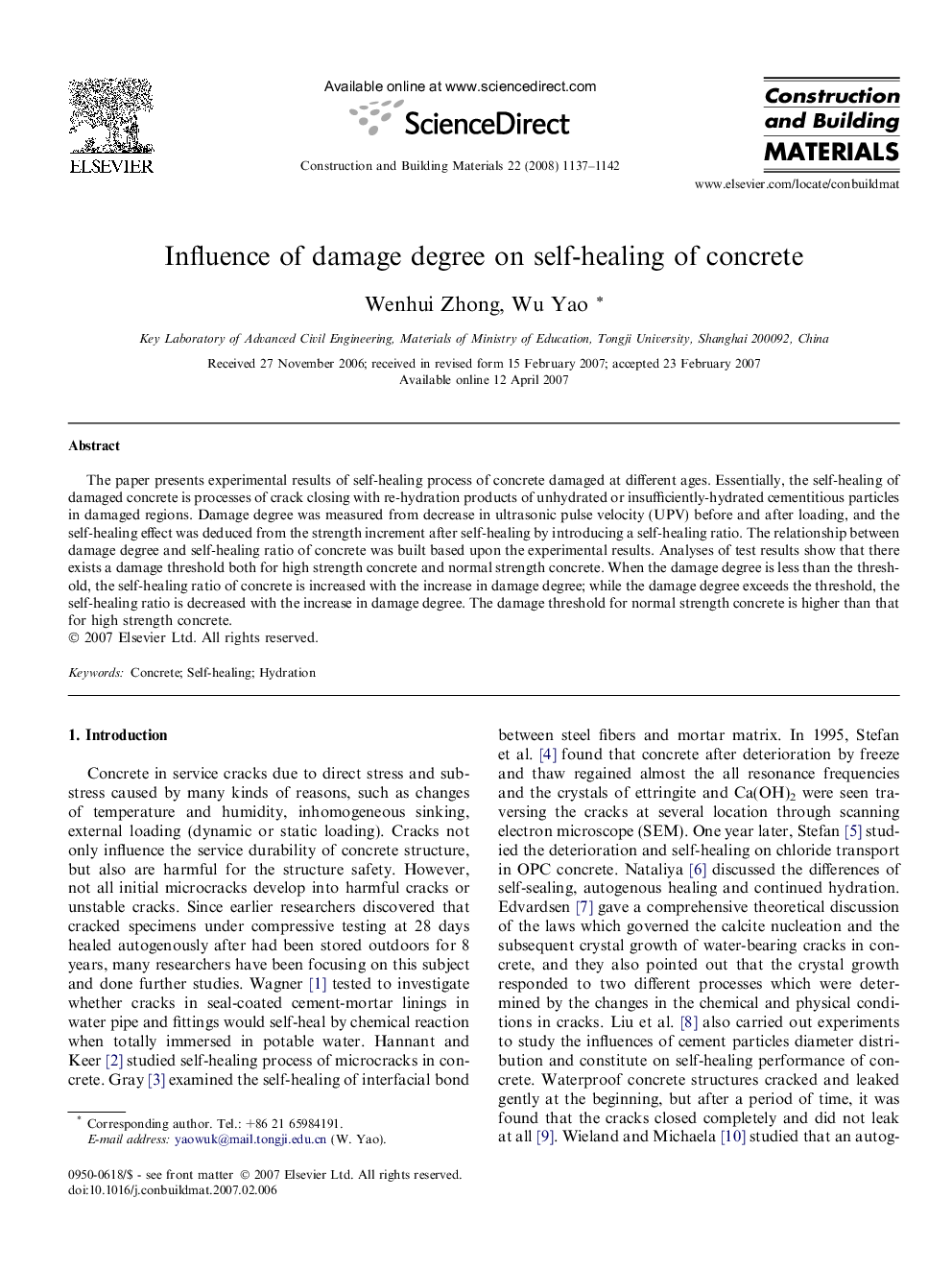| Article ID | Journal | Published Year | Pages | File Type |
|---|---|---|---|---|
| 260545 | Construction and Building Materials | 2008 | 6 Pages |
The paper presents experimental results of self-healing process of concrete damaged at different ages. Essentially, the self-healing of damaged concrete is processes of crack closing with re-hydration products of unhydrated or insufficiently-hydrated cementitious particles in damaged regions. Damage degree was measured from decrease in ultrasonic pulse velocity (UPV) before and after loading, and the self-healing effect was deduced from the strength increment after self-healing by introducing a self-healing ratio. The relationship between damage degree and self-healing ratio of concrete was built based upon the experimental results. Analyses of test results show that there exists a damage threshold both for high strength concrete and normal strength concrete. When the damage degree is less than the threshold, the self-healing ratio of concrete is increased with the increase in damage degree; while the damage degree exceeds the threshold, the self-healing ratio is decreased with the increase in damage degree. The damage threshold for normal strength concrete is higher than that for high strength concrete.
